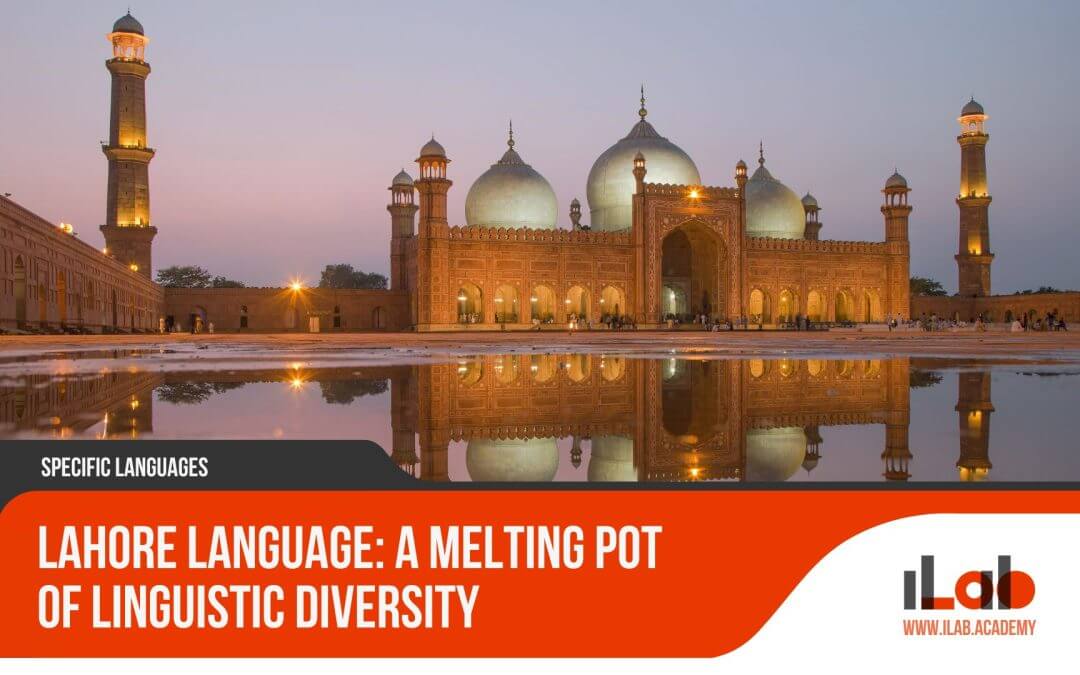Table of contents
Within the rich tableau of Thailand’s heritage, the Thai language emerges not merely as a medium of communication but as the very sinew that interlaces the nation’s cultural identity. As a repository of collective memory and traditional wisdom, the language reflects the intellectual and artistic achievements of the Thai people. Its complex script and tonal qualities are not simply linguistic features, but rather the embodiment of a society’s worldview and a testament to the historical journey that has shaped contemporary Thailand. This exploration commences with the language’s origins, tracing the influences that have honed its current form, and proceeds to consider its role in shaping social structures and national consciousness. As we navigate through the linguistic intricacies and cultural ramifications of the Thai language, we shall uncover its undeniable significance in the fabric of Thailand’s society, inviting further contemplation on its future amidst the tides of change.
Key Takeaways
- The Thai language is the lynchpin of Thailand’s cultural identity and plays a foundational role in the Kingdom of Thailand.
- The historical development of the Thai language has been influenced by various factors, including interactions with neighboring languages and the influence of Pali and Sanskrit.
- The unique writing system of Thai script is one of the most distinctive features of the language.
- Thai language reflects societal values of respect and hierarchy, with vocabulary and honorific forms that demonstrate social dynamics and cultural nuances.
Introduction to Thai Language and Its National Importance
As the cornerstone of Thailand’s rich cultural tapestry, the Thai language holds a distinguished place as the national language, encapsulating the essence of the nation’s identity and heritage. With its origins rooted in the Tai-Kadai linguistic family, Thai is not only a means of daily communication among the people of Thailand but also a symbol of national pride and unity. The language serves as a lynchpin, connecting the country’s diverse communities and reflecting the intricate blend of traditions that define the Thai way of life.
Thai language’s importance transcends mere communication; it is an embodiment of Thailand’s cultural depth. The language itself is a vessel carrying centuries of history, conveying social norms and values through its structure and usage. As the primary language of education and government, Thai plays a pivotal role in the country’s socio-political spheres, ensuring the continuity of cultural practices and collective memory.
Understanding Thai is to grasp the subtle nuances of Thailand’s social fabric. Its influence permeates various aspects of Thai society, from literature and the arts to everyday interactions. The national language is a key component in preserving the nation’s cultural integrity in the face of globalization, balancing the influences of foreign languages with the need to maintain a strong national identity.
For those who wish to engage with Thailand’s rich heritage, learning Thai offers a gateway to a deeper appreciation of the country’s customs, thought processes, and artistic expressions. In exploring the Thai language, one uncovers the spirit of a nation that reveres its past while navigating the complexities of the modern world.
The Historical Development of Thai Language
Building upon its role as a linchpin of national identity, the Thai language’s historical development reflects a tapestry of cultural influences, from ancient Pali and Sanskrit to exchanges with neighboring tongues. The Thai language, known in its own country as Siamese or Central Thai, has evolved over centuries, with its roots believed to originate from the Tai-Kadai language family, which spread through Southeast Asia.
The evolution of Thai can be delineated through several key historical periods:
- Sukhothai Period (13th-14th Century): The earliest evidence of written Thai dates back to this era, showcasing a simpler writing system and vocabulary heavily influenced by Pali and Sanskrit.
- Ayutthaya Period (14th-18th Century): During this time, Thai language and literature flourished. The language absorbed a significant number of loanwords from Mon, Khmer, and other regional languages, reflecting the kingdom’s diverse interactions.
- Rattanakosin Period (1782-Present): Marked by the establishment of Bangkok as the capital, this period saw the standardization of Thai under the influence of King Rama I and subsequent monarchs, aligning the language with national identity and cultural preservation.
Throughout these periods, Thai language not only integrated lexical items from other languages but also adapted its syntax and phonology. The Thai script, which is unique and distinct from those of neighboring languages, was derived from the ancient Khmer script, itself influenced by South Indian scripts.
As a living language, Thai continues to evolve, reflecting both historical roots and modern influences. Its development has paralleled the country’s history, embodying the adaptability and resilience of the Thai people. The language stands as a historical repository, capturing the essence of Thailand’s multifaceted cultural heritage.
The Unique Writing System: Understanding Thai Script
Delving into the intricacies of Thai script reveals a complex system of writing that is integral to the language’s unique identity. The Thai script, also known as ‘akson thai’, is an abugida system where consonantal characters imply an inherent vowel sound that can be altered with diacritical marks. Originating from the Old Khmer script, Thai script has been used since the 13th century and continues to evolve.
The Thai alphabet consists of 44 consonants and 15 vowel symbols that combine into at least 28 vowel forms. This script is also marked by its own set of numerals and a range of tonal marks critical for conveying the five distinct tones in Thai speech. These tonal markers are essential for meaning, as the same word can have different meanings depending on its tone.
To make the writing more interesting for the audience, let’s consider the following table that highlights some of the unique features of the Thai script:
| Feature | Description |
|---|---|
| Consonants | 44 consonants with no upper or lower case |
| Vowels | 15 vowel symbols that create 28 vowel forms |
| Tones | 5 tonal marks to indicate different tones |
| Numerals | A distinct set of Thai numerals |
Thai script is not only a means of communication but also a reflection of the country’s culture and history. Its curvilinear form is visually distinctive, and learning to read and write Thai offers a deeper insight into the nuances of the language and its role in Thai society.
Spoken Thai: Tones, Dialects, and Regional Varieties
While the Thai script provides a visual roadmap to the language, the spoken form introduces a dynamic range of tones and regional dialects that enrich Thailand’s linguistic tapestry. The tones are integral to the meaning of words in Thai, with each tone altering the semantic content of a syllable. This phonemic use of pitch sets Thai apart as a tonal language, which can be particularly challenging for learners who are not accustomed to tonal distinctions.
The tonal system in Thai includes five distinct pitches:
- Mid
- Low
- Falling
- High
- Rising
These tones apply to individual syllables, making the pronunciation of words critical to their understanding. Mispronounced tones can lead to confusion or unintended meanings, highlighting the importance of mastering tonal pronunciation in spoken Thai.
Further diversifying the oral landscape of the language are the regional dialects. While Standard Thai, based on the dialect of the Bangkok region, is taught in schools and used in formal settings, several other dialects are spoken across the country:
- Northern Thai, also known as Lanna or Kham Mueang, prevalent in the Chiang Mai region
- Northeastern Thai, referred to as Isaan, which is influenced by the neighboring Lao language
- Southern Thai, spoken in the southern provinces, has notable lexical and phonetic differences from Standard Thai
These regional varieties add to the richness of Thailand’s spoken language, each carrying distinct lexical choices, idioms, and sometimes even unique scripts. Understanding these regional dialects not only aids in communication but also provides insight into the diverse cultural identities within Thailand.
Thai Grammar and Language Structure
Understanding Thai grammar is crucial for grasping the nuances of the language, as it operates without the use of conjugation and plurality markers, instead relying on particles and a specific sentence structure to convey meaning. This distinctive structure reflects the language’s analytical nature, where word order and context play a paramount role in communication.
Thai sentences typically follow a subject-verb-object (SVO) sequence, akin to English. However, Thai is more flexible with sentence structure, often omitting subjects when they are understood from context. Verbs in Thai do not change form for tense; instead, time is indicated by temporal adverbs or context. The absence of verb conjugation for person or number simplifies the language’s structure but requires a deeper understanding of context to interpret meaning correctly.
Particles are a defining feature of Thai syntax, used to denote politeness, emphasis, questions, and more. They can alter the tone of a sentence without changing the core words. For instance, the particle ‘ka’ (for females) and ‘krab’ (for males) are added to the end of sentences to express politeness. Particles like ‘na’ can soften a statement or command, making the language subtler and more nuanced.
Thai nouns do not have plural forms. Plurality is generally understood from context or quantifiers. Also, there are no articles (a, an, the) in Thai, and adjectives come before nouns without agreement in number or gender.
Grasping these grammatical rules is essential for effective communication in Thai, as they are intrinsic to both the spoken and written forms of the language. Mastery of Thai grammar allows for a deeper appreciation of the cultural subtleties embedded within its structure, reflecting the intricacies of Thailand’s social fabric.
The Influence of Thai Language on Literature and the Arts
The Thai language has woven a rich tapestry of literary and artistic traditions, encapsulating the country’s cultural depth and historical narratives through its written and spoken word. Its intricate relationship with literature and the arts is evident in various forms, from the classical to the contemporary, each carrying the essence of Thai sensibilities and worldview.
Thai literature has been profoundly influenced by the beauty and complexity of the language. Classical works, such as the epic ‘Ramakien’, are not just stories; they are embodiments of Thai moral and social values, expressed through rich and evocative language that has been passed down through generations. Contemporary Thai literature continues this tradition, using language to explore modern themes and issues while retaining a distinctly Thai perspective.
The arts in Thailand, whether it be traditional dance, music, or visual arts, also share a symbiotic relationship with the Thai language. The rhythms, movements, and aesthetics are often inspired by the cadence and emotive power of Thai words and phrases.
- Cultural Narratives: Thai language is a vessel for passing down folklore, religious tales, and historical events, which are often interwoven with moral and ethical lessons.
- Literary Forms: From poetry to novels, the language shapes the structure and flow of Thai literary works, influencing narrative techniques and stylistic choices.
- Artistic Expression: In theater, dance, and visual arts, the Thai language provides context and depth, enriching the audience’s experience and understanding of the art form.
The Thai language is not just a means of communication; it’s a catalyst for creativity and a guardian of the nation’s rich heritage. It molds the way stories are told, art is made, and ultimately, how the cultural identity of Thailand is expressed and preserved.
Language Etiquette and Social Hierarchy in Thai
Inextricably linked to Thailand’s intricate social fabric, the Thai language meticulously embodies the nation’s cultural emphasis on respect and social hierarchy through its nuanced use of honorifics and vocabulary. This linguistic structure is not merely for communication but is a reflection of Thai social norms and values, where deference and politeness are woven into the very fabric of daily interactions.
The Thai language employs a system of speech levels and pronouns that vary depending on the social status and relationship between speakers. For instance, the use of “khrap” for men and “kha” for women at the end of sentences is a mark of politeness, particularly when addressing those of higher status or out of general respect. Additionally, the language features a range of personal pronouns that indicate the speaker’s and the listener’s social position. The pronoun “phom” is used by men to refer to themselves when speaking to someone of equal or lower status, while “dichan” is used by women in the same context.
Vocabulary in Thai is also sensitive to these hierarchical structures. There are different sets of vocabulary for referring to royalty, monks, and commoners, each set appropriate to the perceived social level of the person being discussed or addressed. This extends to verbs, nouns, and even adjectives, demonstrating the pervasiveness of social hierarchy in the language.
Understanding and appropriately using these linguistic distinctions is crucial for effective communication in Thai society. It not only facilitates smooth interactions but also serves as a sign of respect and an acknowledgment of the cultural importance of social stratification. The intricacies of language etiquette in Thai underscore the deep connection between language and cultural identity, making it an essential aspect for anyone looking to fully engage with Thailand’s rich cultural landscape.
Challenges of Learning Thai as a Second Language
Grasping the Thai language as a second language presents a unique set of challenges for learners, ranging from its intricate writing system to its complex tonal pronunciation. Thai script is comprised of 44 consonants, 15 vowel symbols that combine into at least 28 vowel forms, and 4 tone diacritics, which can be intimidating for beginners. The tonal nature of the language is often the most formidable aspect for learners, as the meaning of a word can change dramatically with the alteration of tone.
Here are some of the key challenges learners may face:
- Tonal Pronunciation: Thai has five tones—mid, low, falling, high, and rising—which can be difficult for speakers of non-tonal languages to distinguish and reproduce accurately.
- Orthographic Complexity: The Thai alphabet is non-Roman and combines consonants and vowels in ways that are unfamiliar to learners used to Latin-based scripts. Additionally, Thai writing does not use spaces between words, which can make reading particularly challenging.
- Grammatical and Cultural Nuances: Thai language employs particles to indicate levels of politeness, emotional context, and question formatting. Understanding these subtle elements is crucial for effective communication and requires cultural as well as linguistic knowledge.
Despite these challenges, a variety of resources, such as language courses, online tutorials, and immersion programs, are available to help learners overcome these obstacles. Mastery of the Thai language opens up a rich world of cultural understanding and enables deeper connections with the people of Thailand, making the effort to learn it a truly rewarding experience.
Thai Language in the Age of Globalization
Navigating the currents of globalization, the Thai language has embraced a plethora of loanwords while steadfastly upholding its rich linguistic traditions. As Thailand continues to interact with the global community, English terms in technology, business, and pop culture seep into daily vernacular. This linguistic osmosis has led to the Thai lexicon expanding to include terms like “คอมพิวเตอร์” (computer) and “อินเทอร์เน็ต” (internet). Despite the influx of foreign words, there is a concerted effort to preserve the essence of the Thai language through academic institutions and governmental policies that promote language purity.
The Thai government, educators, and cultural advocates are actively involved in language preservation initiatives. They encourage the use of traditional Thai words and phrases, aiming to sustain the language’s unique identity amidst globalization’s homogenizing effects. Educational programs are designed to instill a sense of pride in Thai heritage, reminding the younger generations of the language’s intrinsic value and historical significance.
Moreover, the Thai language has shown a remarkable ability to adapt, creating hybrid terms that merge foreign concepts with Thai phonology and syntax. This demonstrates the language’s flexibility and the people’s creativity in accommodating new ideas while maintaining linguistic integrity.
As globalization forges ahead, the Thai language’s trajectory remains focused on balancing modern influences with traditional values. While embracing change, Thailand’s approach to language management ensures that Thai remains a living testament to the nation’s past, a communicative tool of the present, and a cultural legacy for future generations. The challenge and opportunity lie in nurturing a language that is both globally connected and distinctly Thai.
The Prospects for Thai Language in Digital Communication and Technology
The digital age has ushered in significant opportunities for the Thai language, expanding its reach and utility through various forms of online communication and technological platforms. As Thailand navigates the currents of digital transformation, the Thai language is experiencing a renaissance in how it is used and perceived in the realm of technology. The proliferation of smartphones and the internet has opened gateways for Thai speakers to engage in digital spaces, ensuring that the language evolves alongside technological advancements.
In the context of digital communication and technology, the prospects for the Thai language are multifaceted:
- Localization of Digital Content: There is an increasing trend towards the localization of websites, applications, and digital services in Thai, making technology more accessible to Thai speakers and fostering a more inclusive digital environment.
- Natural Language Processing (NLP): Advances in NLP technologies have led to better voice recognition and translation services for Thai, enhancing the integration of the language into smart devices and AI interfaces.
- Social Media and Online Communities: Thai has become a vibrant part of social media platforms and online forums, allowing for the expression of local culture, trends, and contemporary issues in the native language.
These developments reflect a broader commitment to not only preserve the Thai language but also to promote its usage in innovative ways, ensuring it remains relevant in a digitalized world. The challenge lies in balancing modernity with tradition, ensuring that as Thai language thrives online, it retains the cultural nuances that make it a cornerstone of Thailand’s national identity. The continued integration of Thai into digital domains promises to enhance its global footprint, while nurturing its rich linguistic heritage.
Frequently Asked Questions
How Has the Thai Language Influenced International Culinary Terminology, Especially With the Popularity of Thai Cuisine Globally?
The Thai language has imparted distinct culinary terms into international lexicon, mirroring the global embrace of Thai cuisine. Words like “Pad Thai,” “Tom Yum,” and “Som Tam” are now recognized universally, reflecting dishes’ authentic flavors and preparation methods. This linguistic infusion enhances global culinary dialogue, showcasing Thailand’s gastronomic influence while emphasizing the importance of preserving linguistic and cultural heritage within the worldwide culinary scene.
What Role Does the Thai Language Play in Religious Practices and Ceremonies in Thailand?
The Thai language plays a pivotal role in religious practices and ceremonies in Thailand, serving as a conduit for the transmission of Buddhist teachings and rituals. Its use in chanting, prayer recitation, and the interpretation of religious texts is integral, reinforcing cultural and spiritual connections within the community. Mastery of liturgical language nuances is often seen as a sign of devotion and respect in the religious context of Thai society.
How Is the Thai Language Represented and Preserved in Unesco’s Intangible Cultural Heritage Initiatives?
The Thai language is preserved within UNESCO’s Intangible Cultural Heritage initiatives through the documentation and promotion of Thailand’s cultural practices. These initiatives recognize and safeguard traditional expressions and oral heritage where the Thai language is central, ensuring its transmission to future generations. UNESCO’s commitment highlights the language’s significance and aids in its protection amidst globalization, affirming its role in maintaining cultural diversity and identity.
In What Ways Has the Thai Language Impacted the Branding and Naming Conventions Within Thailand’s Tourism Industry?
The Thai language significantly influences Thailand’s tourism branding and naming conventions, reflecting its cultural allure. Names and terms derived from Thai enhance the nation’s exotic and authentic image, attracting tourists. Phrases such as “Land of Smiles” and names like “Sukhothai” carry inherent Thai tones and cultural connections, proving essential in marketing materials and fostering a unique identity that resonates with international visitors seeking an immersive cultural experience.
How Does the Education System in Thailand Approach Bilingual or Multilingual Education, Particularly With the Presence of Ethnic Minority Languages?
In Thailand’s education system, bilingual and multilingual education is approached with an intent to promote linguistic diversity while emphasizing Thai language proficiency. Programs are designed to accommodate ethnic minority languages, often integrating them alongside Thai and English instruction. This approach aims to preserve cultural heritage while also equipping students with the necessary language skills for national and global communication, reflecting an inclusive educational strategy.
Conclusion
In conclusion, the Thai language serves as a cornerstone of Thailand’s cultural identity, intricately woven into the nation’s social fabric. Its complex script, tonal structure, and grammatical intricacies reflect a rich linguistic heritage. While presenting challenges to learners, Thai endures as a critical medium for cultural expression and societal cohesion. Amidst globalization and technological advancement, Thai continues to adapt, ensuring its relevance and perpetuating its legacy as a vital element of Thailand’s cultural tapestry.














